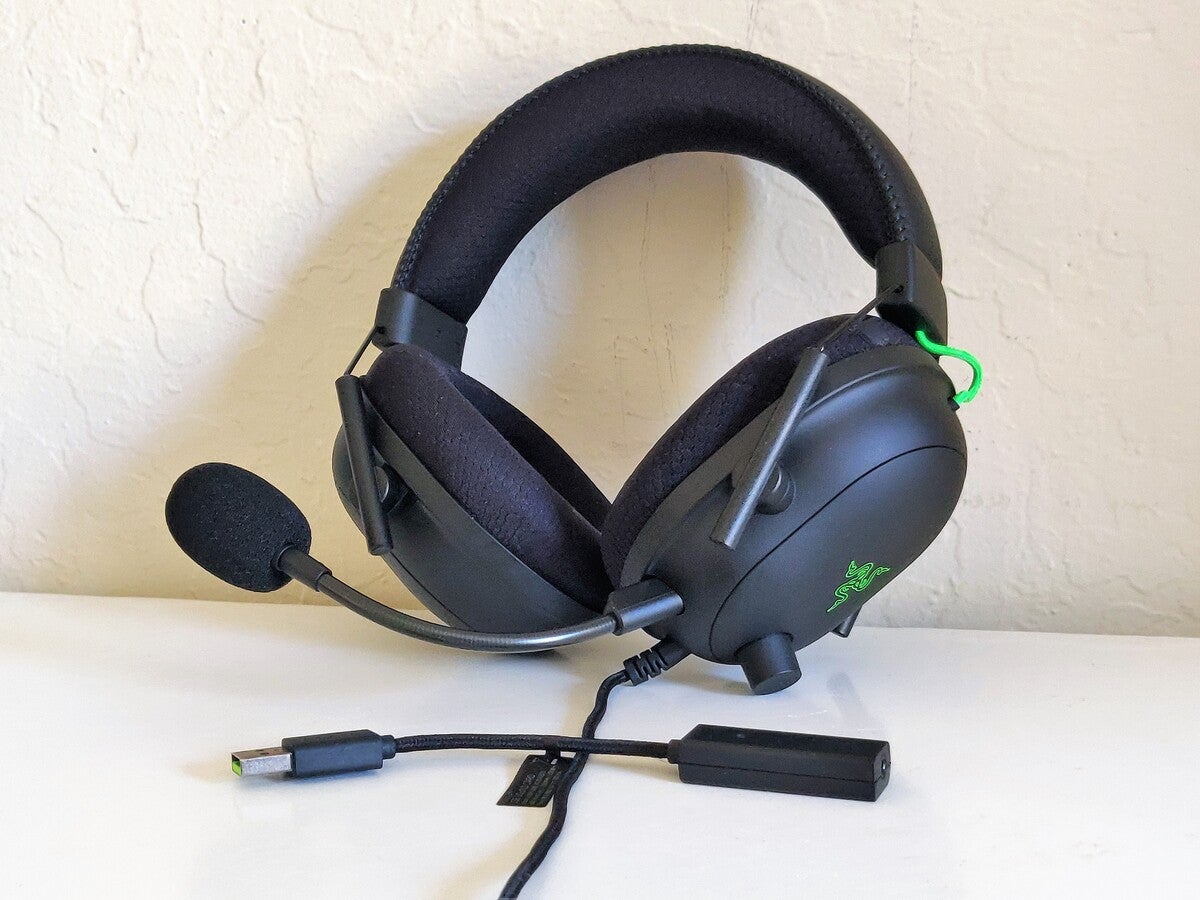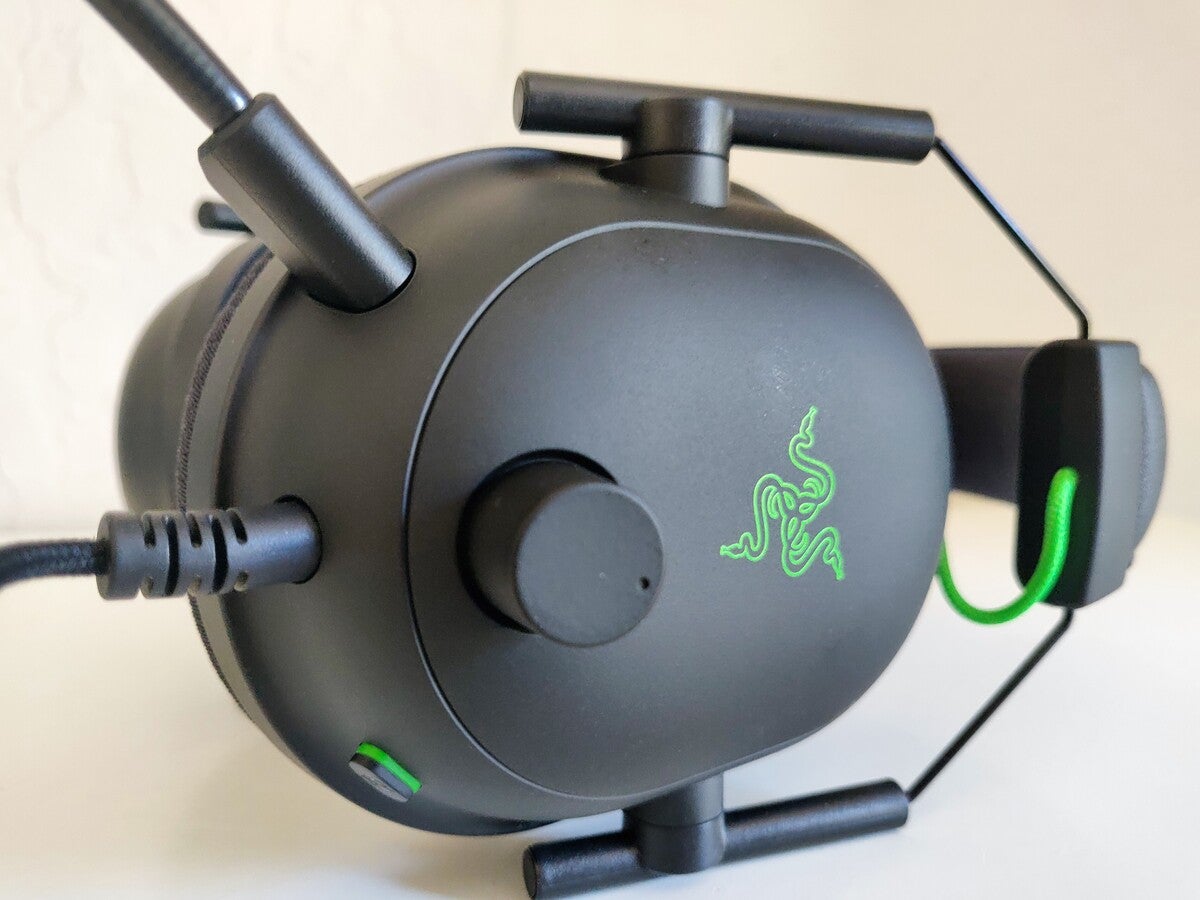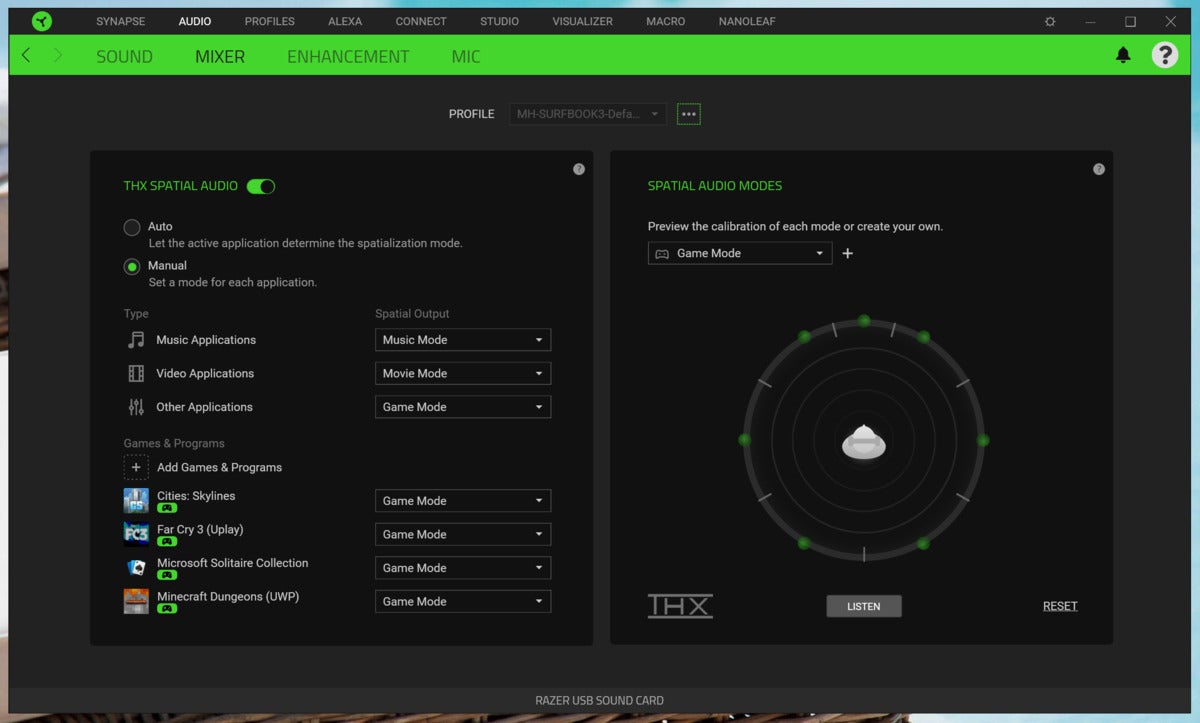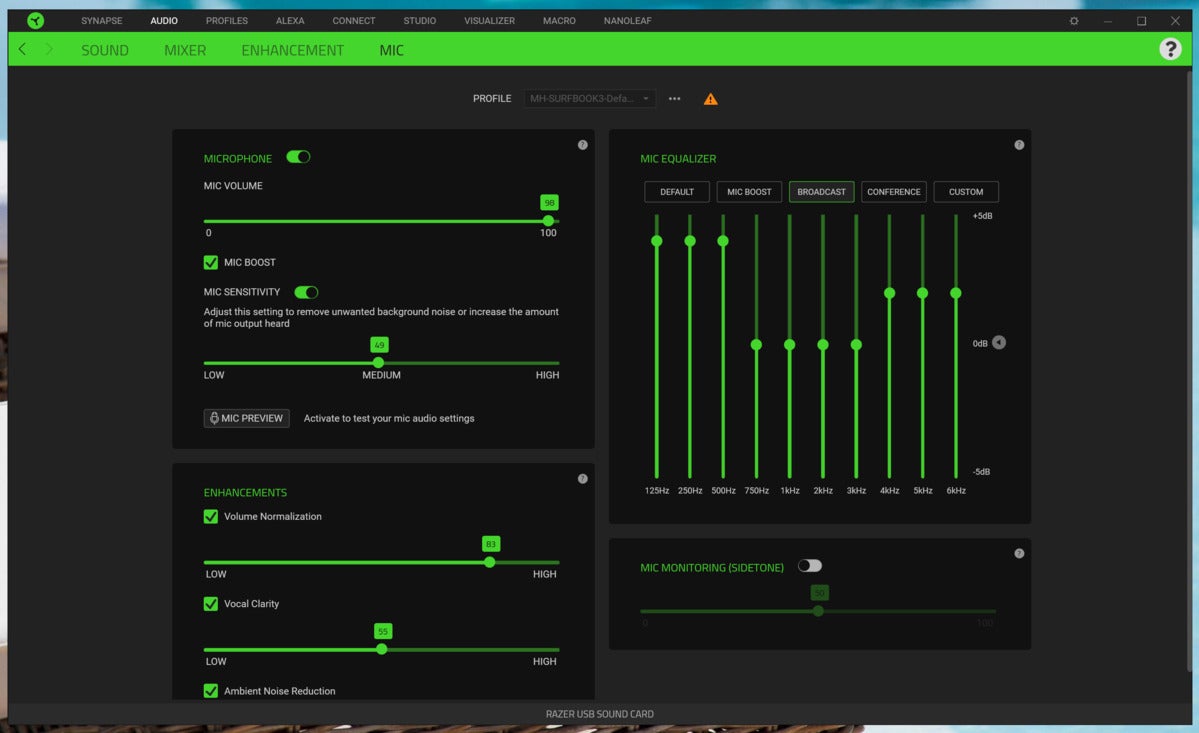Hands on with the THX-powered Razer BlackShark V2 gaming headset - saxtononsgived
Razer on Thursday declared the incoming interpretation of its venerable BlackShark gambling headset, the BlackShark V2, leveraging a partnership with THX to provide spatial-audio profiles for play victimization positional sound.
The $100 wired headset can be used as a "standalone" pumped headset via its 3.5mm laborer. Just the V2 also ships with a USB soundcard that the headset can fireplug into, which adds additional filtering capabilities to the headset's built-in mic. A minute, $60 budget option, the Razer BlackShark V2 X, does away with the sound board but provides a standardised driver and the same mic as the more costly version.
Both headsets ship nowadays, though Razer won't constitute able to provide the THX spatial-audio profiles until August 6, the company aforesaid. On that day, you'll be able to download specific profiles for xviii games, such as Valorant, Apex Legends, Tabulator-Strike: Global Offensive, and more.
As you might expect, controls for all but of the headset's functions can be adjusted using the Razer Synapse utility software system. A new version of Synapse will add the THX gaming profiles, Razer said.
For competitory devices, jibe out our roundup of the best gaming headsets.
 Mark Hachman / IDG
Mark Hachman / IDG Razer's BlackShark V2, seen with its USB dependable card detached
Hands on with the Razer BlackShark V2
Razer provided a review sample of both headsets to PCWorld. While we're not ready to provide a full review, we've tried it tabu enough to furnish our azoic impressions. (Suppress in mind that while the BlackShark V2's 3.5mm labourer allows it to be used with phones, Xbox controllers, and more, the pluggable USB soundcard is designed for Windows PCs only.)
Here are the BlackShark V2's basic spectacles:
- Frequency response: 12 Hz – 28 kHz
- Impedance: 32 Ω @ 1 kHz
- Sensitivity (@1 kHz): 100dBSPL/mW,1KHz
- Drivers: Bespoken Dynamic 50mm Driver
- Inner ear cupful diameter: 65 x 40 mm / 2.56in x 1.57 in
- Connection type: 3.5mm with USB sound card
- Mic frequency response: 100Hz-10KHz
- Mic Signal/noise ratio: 60dB (one-way)
- Cable length: 8m / 5.91 feet
- Free weight: 262g / 0.6 pounds
My for the first time thoughts when the cans bang my ears were: soft…and light.
Both headsets are built around what Razer calls an all new 50mm TriForce Ti sound device driver, enclosed by what the companionship also calls an advanced passive noise-cancelling design. In the real world, all that means is that the BlackShark V2 offers a substantial number of padding to enclose and cradle your ear while block out ambient sounds. And information technology did so, filtering out some of the ambient stochasticity from my office fans, and several of the shrieks as my two boyish boys rampaged through and through the house.
 Mark Hachman / IDG
Mark Hachman / IDG A hardware intensity knob button are mounted on the ear cup itself.
My last-to headset is an HP Omen-branded headset manufactured by Steelseries, which isn't quite as cozy and offers none of Razer's audio tricks. Razer's BlackShark V2 weighs in at 262g (0.6 pound), about incomplete the slant of my existing headset. I've never experienced headset fatigue from chronic use, only lighter weight generally translates into greater comfort. Like most headsets, the BlackShark V2's mic isn't retractable and simply needs to represent pushed out of the way when not in use.
It took far as well elongate to tune the BlackShark V2 to my preferences, though I was happy with the result. Part of this is simply Razer's Synapse software, which allows synchronizing the headset with different Razer products; I actually own both a (left-handed!) DeathAdder mouse besides equally a BlackWidow keyboard, and I have absolutely no desire to sync all trine. The Synapse software has quadruplet separate audio tabs: Sound, Mixer, Sweetening, and Mic, with multiple options at each step.
 Pock Hachman / IDG
Pock Hachman / IDG Razer's Synapse software controls the positional sound and other functions.
Even worse, the "master" volume on the stable check is apparently independent of the common Windows volume option as easily as a dedicated computer hardware dial on the headset itself. This is only worthy mentioning because I was certain that the BlackShark V2 was underpowered until I launch and attuned totally three controls. Did we mention that there are Windows controls for the "Razer USB Sound Card"and the THX Attribute Audio speakers?
How did they end up sounding? Very good, finally. It's always rewardful to play Fleetwood Mac's "The Range" and discover that yes, John the Divin McVie's basso line does appear in the song. My old-school rock ears lit up when the thudding basso of Faggot's "Another Unitary Bites the Dust" hit my ears, too. Not astonishingly, there's a graphics balance hidden away inside the Synapse software package, with a "medicine" preset. I may not have a perfect capitulum, but the BlackShark delivered good key up and polish the scale.
I'm lul not a huge fan of the THX enhancement software, though, as the music preset seems to garble it whol together more than IT helps. That'snot unfeigned of its THX Spatial Audio capabilities, even so, as the algorithmic rule and the headset sorbed look to position the safe pretty well. (My ears heard the THX "whirlybird" circling "above" my head, though, which whitethorn represent thoughtful.) I didn't specifically test the positional audio exploitation an rating copy of the updated Synapse software against the specific games Razer provided, but it did a decent job of positioning the audio with otherwise games already on my system. Eventually, those profiles will include THX Biological science Mode for lifelike intelligent, Beaver State THX Competitive Mode, with more vehemence on spatial awareness and directional cues.
I'm not atomic number 3 impressed with the BlackShark V2's mic. I don't usually fag out a headset operating theater even earbuds during Zoom calls, because the far-field mics on the Microsoft Surface Al-Qur'an 3 2-in-1 seem to capture my voice advantageously. In a quiesce office, Microsoft's mics cordially capture my voice. (I used Windows' ain Voice Recorder to render test files.)
 Mark Hachman / IDG
Mark Hachman / IDG Razer provides numerous options for tuning the BlackShark V2's mic.
The BlackShark V2 john't quite manage it. Even playing with the many options the sound card enables, from volume normalization to a "vocal clarity" mount that enhances the frequencies your voice uses, I was ne'er fit to quite reproduce what the Book 3or the SteelSeries headset delivered. There's regular a mic equalizer, though (with "broadcast" and "conferencing" presets), so some more fine-tuning may have been necessary.
The V2, though, does an excellent job of filtering out unwanted disturbance. Even during BASIC tests, such as placing a voguish utterer around to the side and arse me, I was able to speak and constitute heard quite clearly, with scarce faint background noise. I don't birth many other headsets to compare it to, but I was more than pleased with the BlackShark V2 in this regard.
Does the BlackShark V2 offer gamers "an unfair advantage," enabling them to pick up their enemies coming from miles away? I can't enjoin for dependable. In the run-and-gun environment of Apex Legends, audio frequency cues may not be as evaluative As, say, Player Strange's Battlegrounds. My early impressions tell me that you may want to lean toward the V2X instead.
Source: https://www.pcworld.com/article/393284/hands-on-with-the-thx-powered-razer-blackshark-v2-gaming-headset.html
Posted by: saxtononsgived.blogspot.com

0 Response to "Hands on with the THX-powered Razer BlackShark V2 gaming headset - saxtononsgived"
Post a Comment